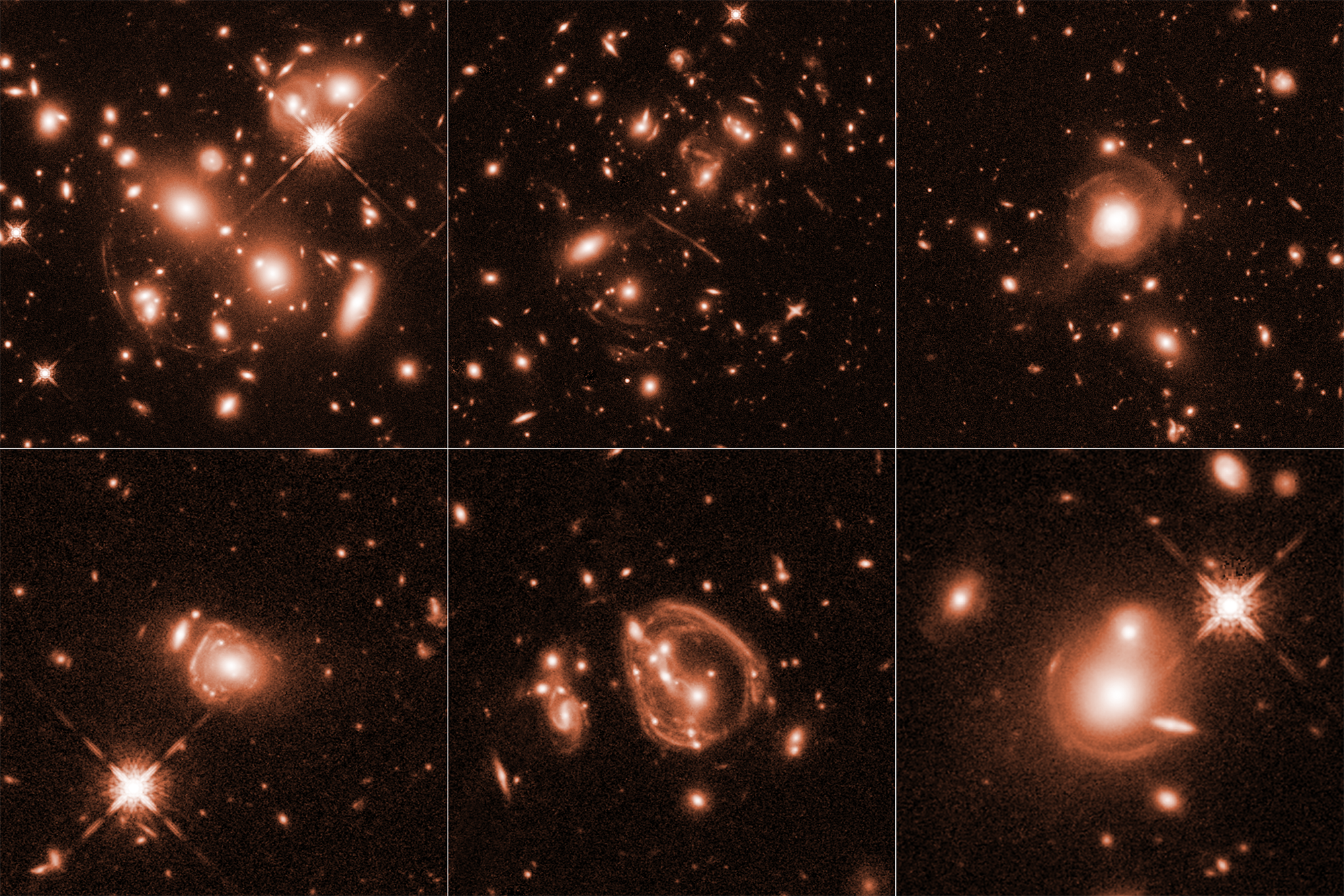Ultrabright Galaxies
The Hubble Space Telescope has captured images of ultrabright galaxies up to 10 to 100 trillion times brighter than the sun — 10,000 more luminous than our own Milky Way. According to NASA, each of these galaxies forms around 10,000 new stars annually, in contrast to our galaxy, which births fewer than 10 each year. The captivating images reveal arcs and rings of light as well as other odd shapes, the artifacts of gravitational lensing, a cosmic effect that is in part responsible for the telescope's ability to see these galaxies.
The formation of stars (as well as their demise) generates large amounts of dust and gas, which in turn tend to envelop galaxies in layers of light of different wavelengths. This makes them tougher to spot in most cases, but the Hubble can penetrate these layers with infrared light. Its observations were further enhanced and clarified by gravitational lensing; the magnification and warping of the brilliant light of these distant galaxies by closer galaxies in the foreground functioning like lenses would. First identified by the European Space Agency's Planck satellite, the images of these galaxies produced by the Hubble are the best to date, although we can expect far better images in the future from larger telescopes like the James Webb.
Our Mysterious Universe
The research team indicates that there are only a few dozen of these ultrabright galaxies in the Universe, situated in regions of space that are unusually dense. It seems that their locations somehow triggered this rapid-fire star formation in the first ages of the Universe. For these reasons, these bright spots could offer clues about how these galaxies formed eons ago — and by comparison, how our own, more average galaxy formed as well.
The burning question for researchers to answer remains: what is powering the explosive rate of star birth? The superluminous galaxies could be further, brighter relatives of ultra-luminous infrared galaxies (ULIRGS), but computer simulations of galaxy birth and growth indicate that the timing appears wrong for major mergers such as those seen in these galaxies. Another theory is that star-birth fuel, gas, is flooding distant galaxies.
“The sky is covered with all kinds of galaxies, including those that shine in far-infrared light,” lead researcher James Lowenthal of Smith College said in a statement to NASA. “What we're seeing here is the tip of the iceberg: the very brightest of all.”
Share This Article
